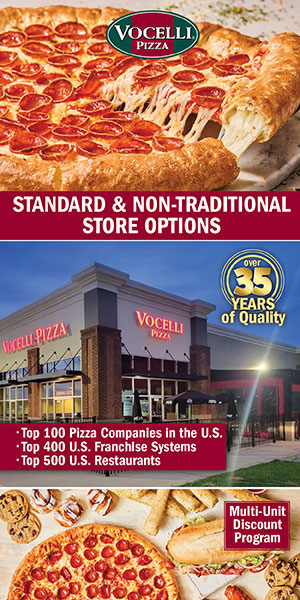Insights Into Using Restaurant Apps Successfully

Restaurant apps exploded during the pandemic as they became a great tool for consumers and restaurants alike. More than half of Americans (52%) used at least one restaurant app as of February 2022, up from 48% in February 2021, according to data from research firm Halverson Group. These apps can provide a convenient way for consumers to order food while helping restaurants reduce labor costs and increase average order size.
But according to researchers at Halverson Group, having a great app doesn’t necessarily lead to converting sales at the register. The company recently completed a test with a national QSR chain and discovered how unpredictable the path to purchase via an app can be.
Among Halverson’s findings, while many people opt to use apps to complete the ordering process after deciding what they want to eat, nearly 20% use them as a kind of recommendation tool, selecting where and what they want to eat only after visiting multiple apps. In fact, on average one in four people (28% as of February 2022) opening up a restaurant’s app end up purchasing from a rival restaurant brand.
Here are some other findings from their research:
Seamless is relative. Poor usability is the #1 cited reason for abandoning an app experience. Restaurants carefully plan every in-store touch point; it's equally essential to think through every step of the digital experience. However, digital teams must remember users judge the usability of an app within their mobile ecosystem. If improvements in navigability and ease of use aren't meeting competitive benchmarks, they may be part of the reason your mobile users are app-hopping.
Digital deals hit different. Often, when users open more than one restaurant app, they are price shopping for the best available deal. With rising commodity and labor costs, many QSR chains are abandoning discounting strategies for in-app deals. This manifests in loyalty programs, mobile exclusives, and geo-located promotions. Digital teams should consider personalized marketing strategies to ensure deals win over the guests comparing nearby brands.
Loyalty is a two-way street. Loyalty programs are a known driver of restaurant app usage. From points for dollars spent to free birthday treats, loyalty rewards come in many successful shapes and sizes. But for many consumers, loyalty goes both ways and, much like price shopping for deals, consumers are comparing loyalty programs side by side from their mobile devices.
If loyalty rewards aren't consistent, consumers will open a new restaurant app, enroll in a new program, and start spending their dollars elsewhere. For mobile-based loyalty programs, sustainable rewards are key to converting in-app visits to in-store spend.
Share this Feature
Recommended Reading:
| ADVERTISE | SPONSORED CONTENT |
FRANCHISE TOPICS
- Multi-Unit Franchising
- Get Started in Franchising
- Franchise Growth
- Franchise Operations
- Open New Units
- Franchise Leadership
- Franchise Marketing
- Technology
- Franchise Law
- Franchise Awards
- Franchise Rankings
- Franchise Trends
- Franchise Development
- Featured Franchise Stories
| ADVERTISE | SPONSORED CONTENT |

$220,000
$500,000





 The multi-unit franchise opportunities listed above are not related to or endorsed by Multi-Unit Franchisee or Franchise Update Media Group. We are not engaged in, supporting, or endorsing any specific franchise, business opportunity, company or individual. No statement in this site is to be construed as a recommendation. We encourage prospective franchise buyers to perform extensive due diligence when considering a franchise opportunity.
The multi-unit franchise opportunities listed above are not related to or endorsed by Multi-Unit Franchisee or Franchise Update Media Group. We are not engaged in, supporting, or endorsing any specific franchise, business opportunity, company or individual. No statement in this site is to be construed as a recommendation. We encourage prospective franchise buyers to perform extensive due diligence when considering a franchise opportunity.